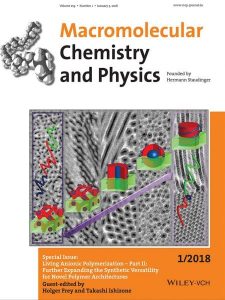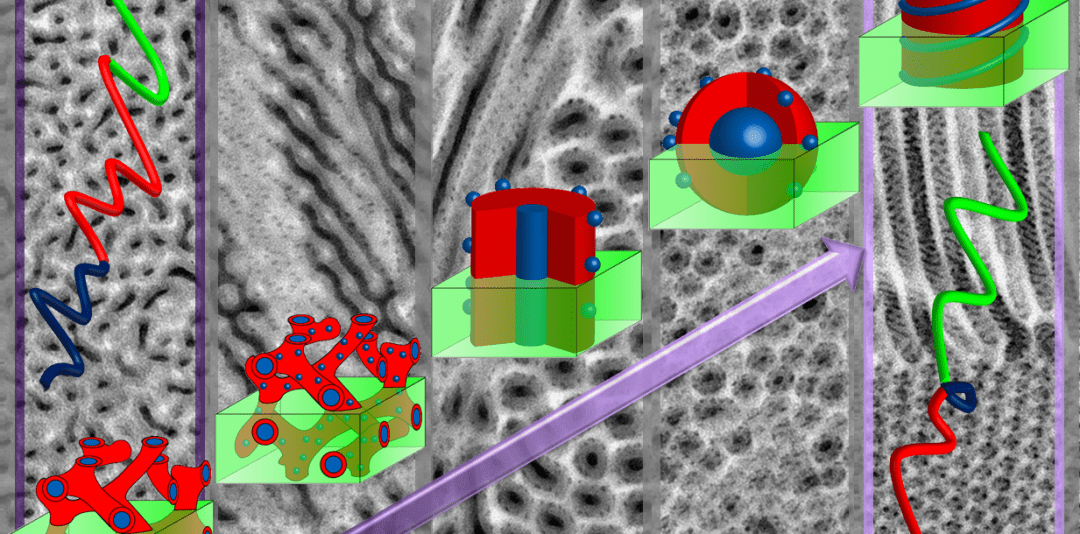Living anionic polymerization is a powerful method to create novel polymer architectures and high molecular weight polymer structures.

Holger Frey and Takashi Ishizone
Professors Holger Frey and Takashi Ishizone state, “..[this] living synthesis technique and its manifold consequences continue to inspire researchers in diverse areas ranging from polymer chemistry to nanotechnology, soft matter physics, biology and pharmaceutical sciences, to name only a few relevant fields.”.
“Industrially, each year more than 700 000 tons thermoplastic elastomers based on triblock copolymers are prepared by carbanionic polymerization. Several million tons of poly(ethylene glycol) and copolymers with propylene oxide are produced by the living oxyanionic polymerization. These examples clearly demonstrate the immense industrial significance of anionic polymerization methods, whenever precise control of chain length and terminal functionality is required or specific architectures are vital.”
Inspired by the 60th anniversary of anionic polymerization in 2016, Holger Frey and Takashi Ishizone organized two excellent special issues for Macromolecular Chemistry and Physics that demonstrate the advantages of the method and its potential for the future.
The first issue appeared in June 2017 (issue 12) and highlights the work of leading scientists mainly based in Asia.
We are now proud to present the second of the two special issues that showcases the work of prominent scientists mainly based in Europe and USA .
The issue is available for FREE until December 31, 2018!
Contributions to the issue:
by Holger Frey and Takashi Ishizone
Design and Synthesis of Multigraft Copolymer Thermoplastic Elastomers: Superelastomers
by Nam-Goo Huiqun Wang, Wei Lu, Weiyu Wang, Priyank N. Shah, Konstantinos Misichronis, Nam-Goo Kang* and Jimmy W. Mays*
Four-Phase Morphologies in Blends of ABC and BAC Triblock Terpolymers
by Taida Gil Haenelt, Clarissa Abetz and Volker Abetz*
by Christian Schubert, Martina Schömer, Marvin Steube, Stefan Decker, Christian Friedrich and Holger Frey
Revisiting the Anionic Polymerization of Methyl Ethacrylate
by Justin G. Kennemur, Frank S. Bates and Marc A. Hillmyer
by Antonella Pagliarulo and Lian R. Hutchings
by Alison R. Schultz, Sachin Bobade, Philip J. Scott and Timothy E. Long
by George V. Theodosopoulos, Spyridoula-Lida Bitsi and Marinos Pitsikalis
by Eleni J. Kepola and Costas S. Patrickios
by Yifan Li and Daniel M. Knauss
Living Anionic Polymerization of 4-(1-Adamantyl)-α-Methylstyrene
by Shingo Kobayashi, Hiroshi Kataoka, Raita Goseki and Takashi Ishizone
by Antoine Benlahouès, Blandine Brissault, Sylvie Boileau and Jacques Penelle
Anionic Polymerization of 2-Hexyl[3]dendralene
by Yuki Takamura, Katsuhiko Takenaka, Tomoyuki Toda, Hiroki Takeshita, Masamitsu Miya and Tomoo Shiomi
by Tassilo Gleede, Elisabeth Rieger, Tatjana Homann-Müller and Frederik R. Wurm
Polyvinylpyridine-Grafted Block Copolymers by an Iterative All-Anionic Polymerization Strategy
by Michael Appold, Christian Rüttiger, Björn Kuttich, Bernd Stühn and Markus Gallei
by Kévin Roos, Anne-Laure Wirotius and Stéphane Carlotti
Enjoy the reading!
Interested in contributing to Macromolecular Chemistry and Physics?
Submit HERE your next paper to the journal. We look forward to it!

















